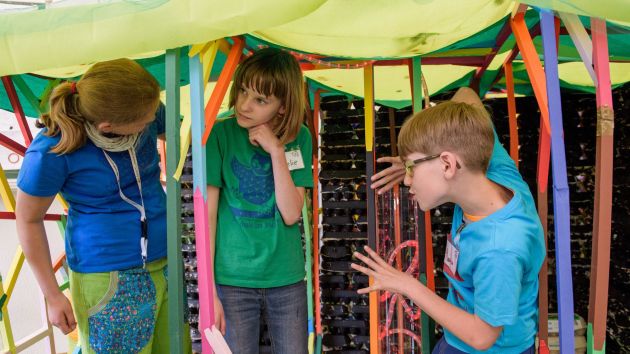“How do we want to live – in the city and in the country?” That is the slogan of “Little Scientists’ Day” on June 23, 2015, which the foundation “Little Scientists’ House” (Haus der kleinen Forscher) stages every year. The foundation provides materials and ideas to join in before and after the nationwide day of action on its website at www.tag-der-kleinen-forscher.de (only in German).
Mobility, energy, waste water and architecture are at the top of the researchers’ agenda in 2015 and offer an opportunity not only for lots of discussion, but also for questioning common perceptions. “What would the roads be like without cars?” What would houses, squares and streets look like if children were allowed to have their say? How will we travel in future?” “Little Scientists’ Day” invites teachers, parents and educators to team up with children to make the world a laboratory, look at things from an unusual perspective and develop new ideas. The day of action provides suggestions for discovering the world in a playful way together with kids with reference to real-life topics and encouraging their interest in scientific subjects.
“Children are inquisitive and creative. We want to make them eager to learn more about scientific interrelationships and help them find answers to questions. Siemens Stiftung supports the initiative in its capacity as a partner to the ‘Little Scientists’ House.’ It’s our conviction that early childhood education is crucial to fostering a lasting interest in technology and sciences and so helps citizens play an active part in shaping society later,” says Barbara Filtzinger, head of the working area Education at Siemens Stiftung.
The largest early childhood education initiative in Germany, the “Little Scientists’ House” foundation qualifies and supports educationalists to enable them to accompany children ideally as they undertake voyages of discovery in research on their own. The foundation cooperates with more than 230 network partners nationwide. More than 4,200 institutions have already been certified as a “Little Scientists’ House”.
“Little Scientists’ Day” – Shaping the future with children



